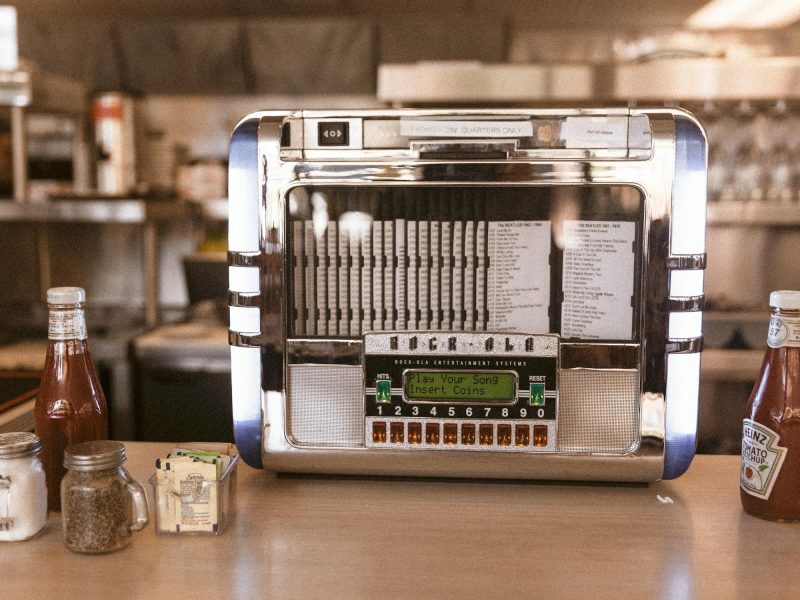Have you ever noticed a blackish-green substance around your kitchen sink? That’s mold, and it’s not only unpleasant to look at, but according to the CDC and other experts, it can also impact your health. Mold thrives in damp environments, making your sink a breeding ground.
But don’t panic just yet – we’re about to guide you through the steps to remove kitchen sink mold yourself. We’ll provide you with tips on how to prevent mold growth and discuss the types of mold you might encounter in your kitchen. Finally, we’ll let you know when to call in the experts if the mold situation seems too severe.
So, let’s get started with some mold-busting tips!
Table of Contents
Signs of Black Mold
Have you ever noticed a musty odor in your kitchen sink? Does the area around your sink feel damp and humid? These could be signs of black mold infestation in your kitchen sink (and the surrounding areas).
Black mold grows rapidly in damp, humid environments, making your kitchen sink the perfect breeding ground for this pesky fungus. You might not be able to spot black mold immediately, but if you notice any dark spots or patches in and around your sink, it’s time to take action.
It’s important to remember that black mold can have serious health consequences. If not addressed in time, it can lead to respiratory problems like shortness of breath, wheezing, and coughing. Keeping your kitchen sink clean and dry is crucial to prevent mold growth (but we’ll provide you with some other actionable tips below, too).
If you suspect mold in your kitchen sink, carefully examine the affected area for any visible growth. Mold grows in clusters of black or dark green spots that can be easily distinguished from the surrounding surfaces. Besides the visual signs, you may also see a fuzzy texture on the affected area.
Another telltale sign of black mold infestation is the musty odor. The smell is common in damp environments and is usually accompanied by increased humidity. This is why kitchen sink mold is typically more common in the wetter winter than summer.
How to Prevent Mold Growth
Nobody wants to see mold growth in their home. Not only is it unsightly, but it can also pose a health risk to you and your family. Fortunately, there are several steps you can take to prevent mold growth before it even begins.
First and foremost, keep your sink as dry as possible. After each use, wipe down your sink completely with a dry cloth or paper towel. Water left in a sink can create the perfect environment for mold to grow, especially if it touches the surrounding walls.
Next, ensure you’re properly ventilating your kitchen. Ventilation helps to keep the air moving and prevents moisture from building up. If you don’t have an overhead fan, consider opening a nearby window or installing a small fan to keep the air circulating. Or, if you live in a basement apartment, it’s worth investing in a dehumidifier.
Another important step is to fix any leaks as soon as they occur. Even a small leak can create enough moisture for mold to start growing. Keep an eye out for any signs of water damage or leaks in your sink or under the cabinets.
Finally, consider using a mold-resistant caulk or sealant around your sink and countertops. This will help prevent moisture from seeping into small crevices and create the perfect mold growth conditions.
How to Remove Kitchen Sink Mold
Have you performed mold testing to find that there is, indeed, kitchen sink mold plaguing your home? While that’s unfortunate, natural mold removal is an option that can help you remove kitchen sink mold yourself.
However, before you tackle the problem yourself, it’s important to determine the severity of the infestation. If the widespread mold has penetrated your plumbing system, it’s probably time to call in the professionals.
If the mold is isolated to the sink basin and drain, you can take some simple steps to remove it. First, thoroughly clean the affected area with vinegar and baking soda. This natural cleaner will kill the mold spores and leave your sink shining. You should also keep your sink clean and dry, as mold thrives in moist environments.
If vinegar and baking soda doesn’t do the trick, you may need to try a commercial mold remover. Keep in mind, however, that many of these products are harsh and may require protective gear, so always follow the manufacturer’s instructions carefully.
When to Call Mold Remediation Companies
When’s the time to visit certified mold removal specialists to ask for a consultation? If you’ve tried cleaning the mold yourself, but it just keeps coming back, or you notice extensive growth, it’s time to call in the experts. Don’t wait until the health of your family is at risk. Mold remediation companies have the knowledge and expertise to tackle the problem head-on.
Here are some scenarios when you should consider calling an expert.
You See Visible Mold Growth
If you can see mold patches on your walls or ceilings, it indicates a severe mold problem that requires professional attention. Mold can quickly spread through the air and cause health problems, so taking immediate action is crucial.
There’s a Persistent Musty Odor
Even if they aren’t visible, mold spores can cause a foul smell. If you notice a persistent musty odor in your kitchen, it’s time to get help from the experts. They will be able to locate and remove the smell’s source.
You Have Health Problems
Mold can cause various health problems, from allergies to severe respiratory issues. If you or anyone in your family experiences unusual health problems, it’s best to get your home tested for mold and hire remediation experts to get rid of it.
More Household Tips
Looking out for kitchen sink mold isn’t your only task as a homeowner. There are plenty of other health and safety factors to consider. However, staying on top of decoration trends is also important to ensure your house feels like a home.
Click here to browse our home decor articles with tips, tricks, and expert advice!


